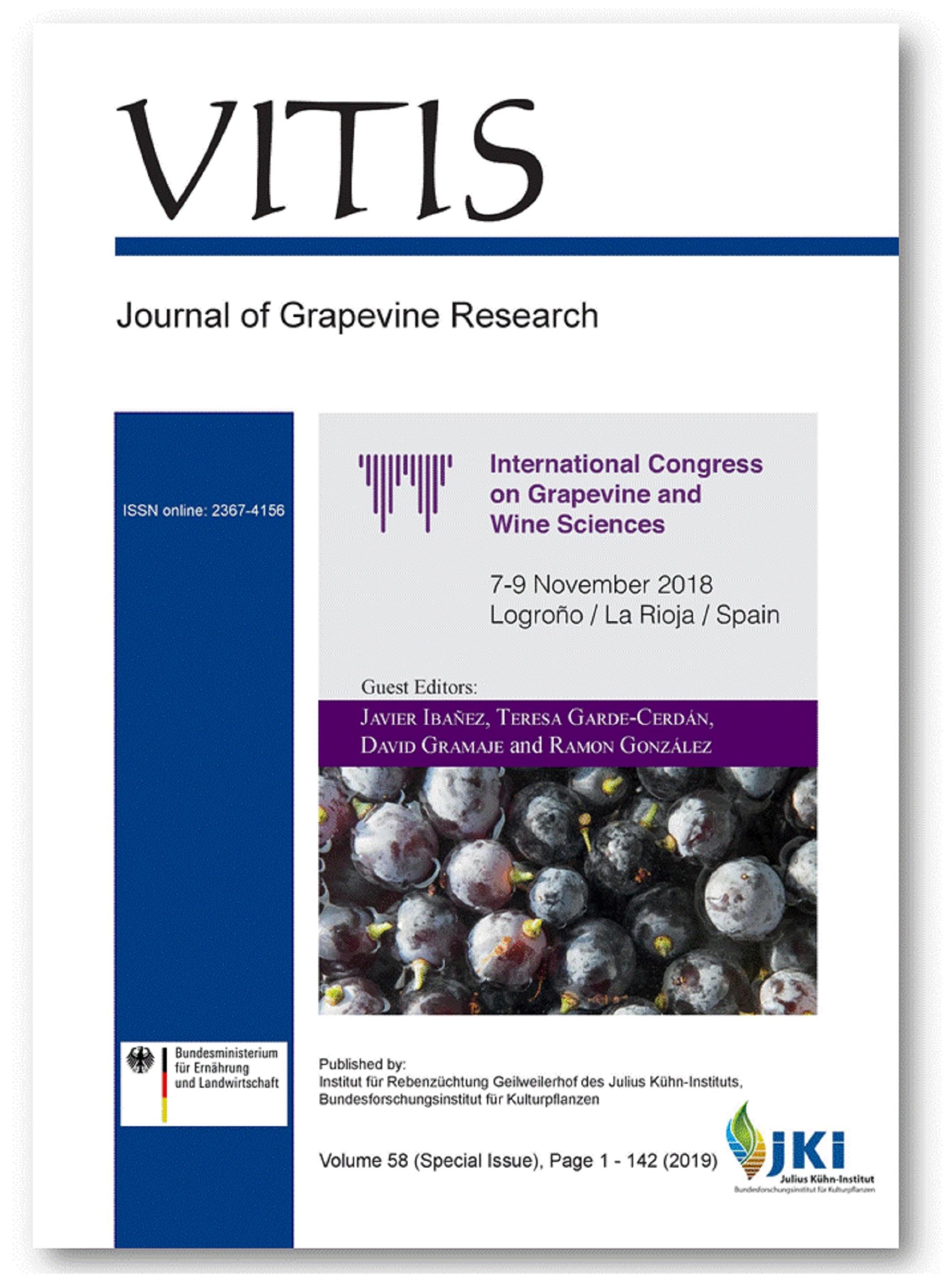Agronomic classification between vineyards ('Verdejo') using NDVI and Sentinel-2 and evaluation of their wines
DOI:
https://doi.org/10.5073/vitis.2019.58.special-issue.33-38Keywords:
Sentinel-2; NDVI evolution; NDVI changes; vineyard; remote sensing; Vitis vinifera L.Abstract
A classification between three vineyards belonging to the Appellation of Origin Rueda (Castilla y León, Spain) has been established in veraison to determine the productive capacities of each vineyard and to study their impact on the grape quality. Several open-access multispectral images obtained from the SENTINEL-2A satellite in the year 2016 were used to calculate the NDVI (Normalized Difference Vegetation Index), which provides information about the vigour of the vineyards. Eleven cloud-free images were assessed and based on the NDVI, three vigour levels were established: high vigour (0.356-0.458), medium vigour (0.285-0.355) and low vigour (0.166-0.284). A level of vigour was assigned to each vineyard according to the NDVI mean values of its pixels. Significant differences were found in the pruning wood weight and yield: high, medium and low vigour values were 2438, 1895 and 1487 kg·ha-1 and 15984, 12990 and 10576 kg·ha-1, respectively. The highest values of total acidity (6.04 g·L-1) and tartaric acid (9.05 g·L-1) have been obtained in low vigour, as well as the lowest values of pH (3.26), malic acid (0.42 g·L-1) and potassium (1640 ppm). Finally, one wine per vigour was produced and a tasting was carried out to check if the differences between the vineyards were perceptible. According to the obtained results, the NDVI is a good indicator to classify vineyards, finding notable differences between the experimental treatments studied.
Downloads
Published
Issue
Section
License
The content of VITIS is published under a Creative Commons Attribution 4.0 license. Any user is free to share and adapt (remix, transform, build upon) the content as long as the original publication is attributed (authors, title, year, journal, issue, pages) and any changes to the original are clearly labeled. We do not prohibit or charge a fee for reuse of published content. The use of general descriptive names, trade names, trademarks, and so forth in any publication herein, even if not specifically indicated, does not imply that these names are not protected by the relevant laws and regulations. The submitting author agrees to these terms on behalf of all co-authors when submitting a manuscript. Please be aware that this license cannot be revoked. All authors retain the copyright on their work and are able to enter into separate, additional contractual arrangements.



